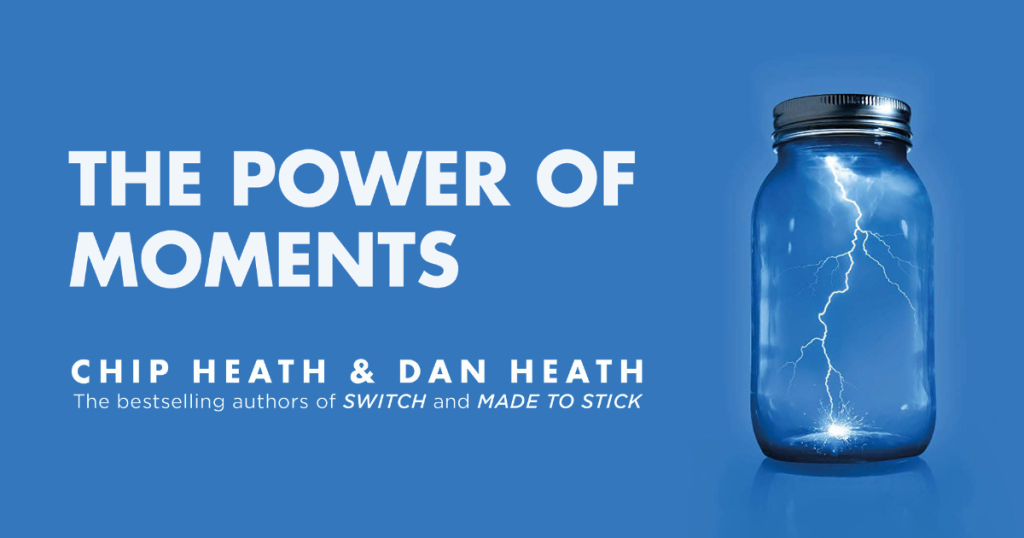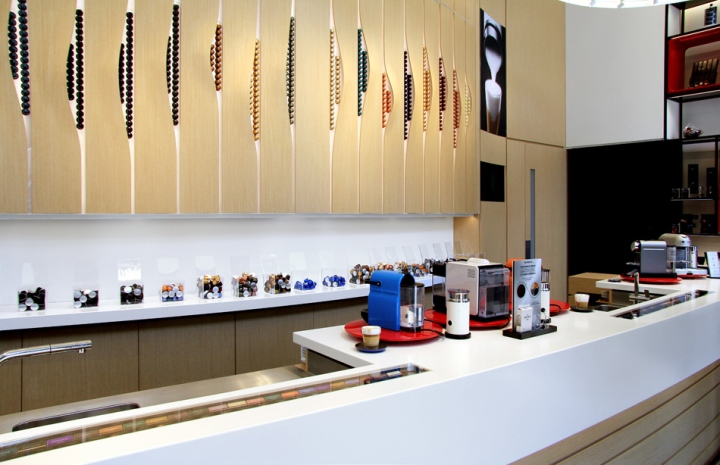Harnessing the power of moments

A ‘defining moment’ is one that makes people ‘feel the need to pull out their cameras’. It is a moment that we want to eternalise, that we want to remember, that stands out from other moments.
The Power of Moments, by Chip and Dan Heath
This fantastic book outlines some of the best interpretations of memorable experiences and what it takes to create them that we’ve seen. In today’s saturated world of goods and services, brands have to fight hard to stand out from the clutter. They have just a second to own a micro moment in a user’s mind. Micro moments occur when people reflexively turn to a device like a smartphone to learn, discover, watch or buy something. These are intent-rich moments when decisions are made and preferences are shaped.
Through the principles of the experience economy, our digital experience design team constantly finds new ways to design useful, original and memorable user experiences. In this blog, we’ll look at how the experience economy came to life – plus examples of what brands have done to harness the power of moments.
The evolution of the experience economy
The term was coined in 1998 by Pine & Gilmore in their book The Experience Economy. To explain the evolution of the four economies in layman’s terms we can take the example of a birthday cake.
- The agrarian economy (think flour, sugar, butter, eggs)
- The industrial economy (a cake mix)
- The service economy (a birthday cake at a bakery)
- The experience economy (a carefully curated children’s birthday party at a special location)
The experience economy is all about creating events that engage customers in a memorable way. Interestingly, this concept is not new. One of the first brands to understand how to design powerful moments was Disney. They created an immersive, themed entertainment park that catered to the whole family – the first of its kind. Today, we see the concept of theming mimicked in other economies, for example the restaurant industry, bookstores and even entire neighbourhoods. In Alan Bryman’s book, The Disneyization of Society, he delves deeper into theming and how it’s become part of our world today.
From moments to memories
How do you turn what might be an ordinary moment into a powerful, positive memory? To harness the power of a moment, experiences must be intentionally designed to be so personal that it gives users a transformative experience. Before building something, we need to pause and ponder… Is it something that people need? Is it something they like? Is it of value to them? Once we have these answers, we can explore how to deploy the elements of a memorable experience. There are four types of memorable moments:
Moments of elevation: Moments rising above the everyday, transcending the normal course of events. For example, boosting sensory appeal, raising the stakes through incentivising people or breaking the script by adding an element of surprise.
Moments of insight: Moments that rewire our understanding of ourselves or the world. For example, by changing how we view ourselves or our environment.
Moments of pride: Moments that capture us at our best and makes us feel special. For example, multiplying customer milestones by celebrating the small wins, recognising customers through personalisation, or building courage by making something that’s unpleasant more appealing.
Moments of connection: Moments that spark connection and allow bonding. For example, creating opportunities to engage with others.
To give you a better understanding of how some of these moments are given life by brands, we’ve delved deeper into two of the four moments – moments of elevation and moments of pride.
Designing moments of elevation
How can we boost sensory appeal, raise the stakes and break the script in reality? Well, it’s happening every day across the world, and we’ve gathered some stellar cases of what brands have done.
Sensory appeal
The Nespresso flagship store in Milan was designed to appeal to people’s senses, encouraging the tasting and discovery of their products. Spread out over four floors, the ground floor has a dedicated Nespresso news area, tasting area, and self-service area where you can check out on your own or collect an online order. The first floor has an atelier expert area for workshops and special tastings, as well as a customer care area with Nespresso coffee specialists. The second level is home to the machine gallery, with Nespresso appliances on display. Finally, the top floor is for meetings and features machines for commercial applications.

Oil & Vinegar is another beautiful example of a store designed to boost the sensory experience in-store. A culinary gift shop for Mediterranean cuisine, this experience store appeals to multiple senses. The welcoming glass shopfront invites passers-by to step inside and immerse themselves in the Mediterranean atmosphere for a while. From the music, to the smells, to the design and tasting stations – everything about this space is about stimulating the senses.
Raising the stakes
Soft toy company Squishable managed to raise the stakes to create a memorable experience for users by elevating a competition for soft toy design submissions. Their Project Open Squish competition allows artists and designers to submit their Squishy design. If it gets upvoted by the Squishy community, it will go on to prototype with the possibility to be included in their line of plush toys. They’ll receive $500 cash, a plushie of their design, and if it gets added to the line, their name on the hangtag. You can submit as many designs as you want – giving users the chance to really shine and be involved in a brand that they love.
Breaking the script
Carvana’s car vending machines truly broke the script of an expected experience with their fully automated, coin-operated car vending machines in the U.S. The car vending machine combines technology, robotics and a custom-made glass environment. It allows customers to pick up the car they have purchased by entering their name, dropping in a coin, being able to view the “vending” process through the glass and collecting their new vehicle at the delivery bay.
Interactive e-commerce brings many ways to reinvent a typical activity or task, with things like virtual fitting rooms and live shopping.
H&M’s innovation lab in Germany is testing a virtual fitting room experience for their stores. The fitting room will give customers the chance to virtually try on looks from the new collection in the comfort of their own home. The technology allows them to have a personal avatar (digital twin) matched to their own body measurements, making way for a totally new way of shopping and trying on clothes.
Society’s foray into the metaverse will also bring exciting developments – especially in the fashion industry. One such example is design house Gucci’s expansion into the metaverse and onto gaming platform Roblox. Like the real-life version, Gucci Garden on Roblox offers multiple themed rooms that pay homage to Gucci campaigns and touch on features that aren’t possible in real life. Watch this exciting space…
Designing moments of pride
How do we multiply customer milestones, recognise customers and build courage in our customers?
Multiplying milestones
In online game League of Legends, the ranking system of characters is designed in such a way that a user doesn’t just go from zero to hero but rather lets them celebrate the small gains as they move up in their ranking.
Recognising customers
Perhaps the best-known campaign that recognises customers is the Coca-Cola Share a Coke campaign. The campaign added the names of people around the world on their bottles and encouraged customers to share a coke with that person, for example “Share a Coke with Megan”. The campaign gained worldwide success due to this simple personal touch that resonated with customers in every corner of the globe.
Building courage
MRI engineer Doug Dietz had the idea to turn something that would normally be a very unpleasant experience (in this case children having to undergo an MRI scan) into a moment of courage. He redesigned the machines in a way that is appealing to children – for example, a boat. Children were asked to hold still so they don’t rock the boat, and if they really do hold still, virtual fish start jumping over them.
To learn more about how you can harness the power of moments to create standout experiences for customers, including examples, we highly recommend the following books that are filled to the brim with remarkable tales and practical insights:
What’s next for your brand?
Harnessing the power of moments to elevate your brand can help build loyalty with users and keep them coming back for more. Our digital experience design team uses the principles of the experience economy to create useful, original and memorable user experiences for your audiences. Find out more about the team and what we can do for your brand.




